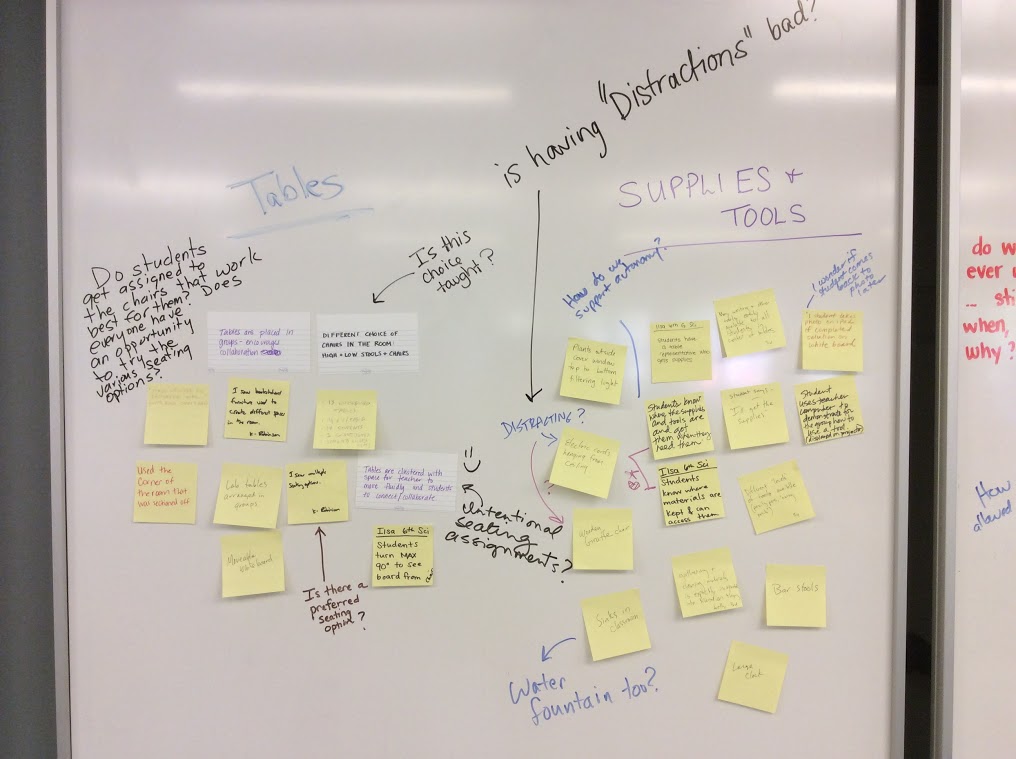On Monday, Student Progress Conferences came to a close for the Fall semester. This is one of my favorite times of year, celebrating student growth, acknowledging areas for improvement, and setting goals that students will work towards for the remainder of this semester. In the Middle School, we challenge students to be the leaders of these conversations, boldly presenting a summary of their teacher’s feedback to their families and advisor. Students as young as 4th and 5th grade sit with multiple adults to discuss their year so far, and to plainly share goals they have set for themselves to be better question askers, better organized, or to be better collaborators with their peers. I am always in awe of how well we prepare young people to do this very hard task. The meetings feel celebratory, reflective, and remind me how important it is for adults to model self-study and a growth mindset for students.
Hillbrook is particularly committed to adult learning. Our Center for Teaching Excellence (CTE) offers a wide variety of opportunities for teachers and staff to develop their passions and also to gather in groups for self-study and reflection. Back in August, I shared about the new protocol groups faculty and staff were invited to join this year. Each of these is designed to bring adults together to engage in collegial conversations in the service of collective growth.
One of the groups, Instructional Rounds, is designed to support individual improvement by recognizing and sharing practices of good teaching. It is based in a discipline of description–learning to name and describe teaching practices with detail, while unlearning to judge. Instructional Rounds provides adults a method of self-study and reflection on practice, so that they too can acknowledge feedback and set goals for their growth.
Last month, a group of 20 administrators, faculty, and staff participated in the first round of visits to multiple classrooms, taking notes of everything they saw and heard related to some guiding questions about the physical learning environment. Our observations included everything from how materials are laid out, to lighting and sound, to teacher language, to how students were using their bodies in the classroom. After the visits we met to debrief our observations, naming practices we noticed, and discussing questions like, “What options do students have to mentally or emotionally take a break?” and, “How do we talk to students about managing their bodies?” The conversation was high-energy, with each member sharing take-aways to try out in their own space, or a new area of practice they wanted to observe more about.
Hillbrook’s CTE has invested a lot in this area of our program. In the past few years we designed the iLab to be our first agile classroom, studied student and teacher use of it, drew conclusions about its best features and brought those into nearly every other space on campus during our Reimagining Classrooms project. In the past three years, we have run several research studies around the effects of space on teaching and learning. After the Instructional Rounds visits, ranging from Kindergarten to 3rd grade Writer’s Workshop to 8th grade Geometry, I was heartened to hear a group of adults describing shared understandings and also asking hard questions of each other about the topic of learning spaces.
In 2015, I was among a group of 10 educators funded by the CTE to attend the Project Zero Summer Institute at Harvard’s Graduate School of Education. In one of the closing sessions, Steve Seidel (former director of PZ) said something that stuck with me: “Schools are the only place where we’re required to get together and work on how we all want to live together.” I am so grateful that Hillbrook is a place where learners of all ages have decided this is how we want to live together: by pausing throughout each year to reflect, ask hard questions, think aloud about our own behaviors and set goals for growth. Each time we pause for this moment, I smile to think how well-prepared we are for it, how gladly we engage in the cycle, and what an exciting future we have together as learners of all ages.
